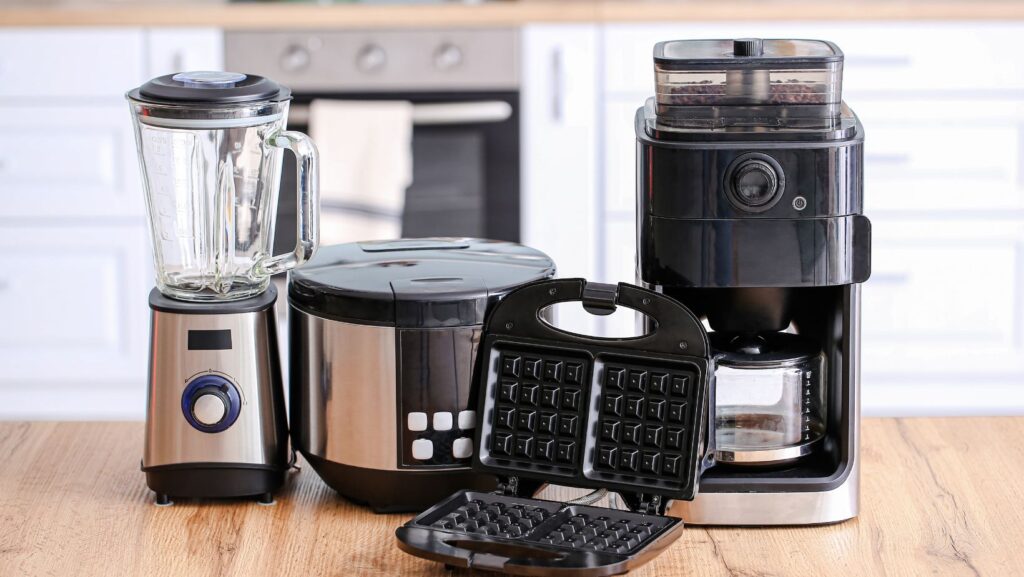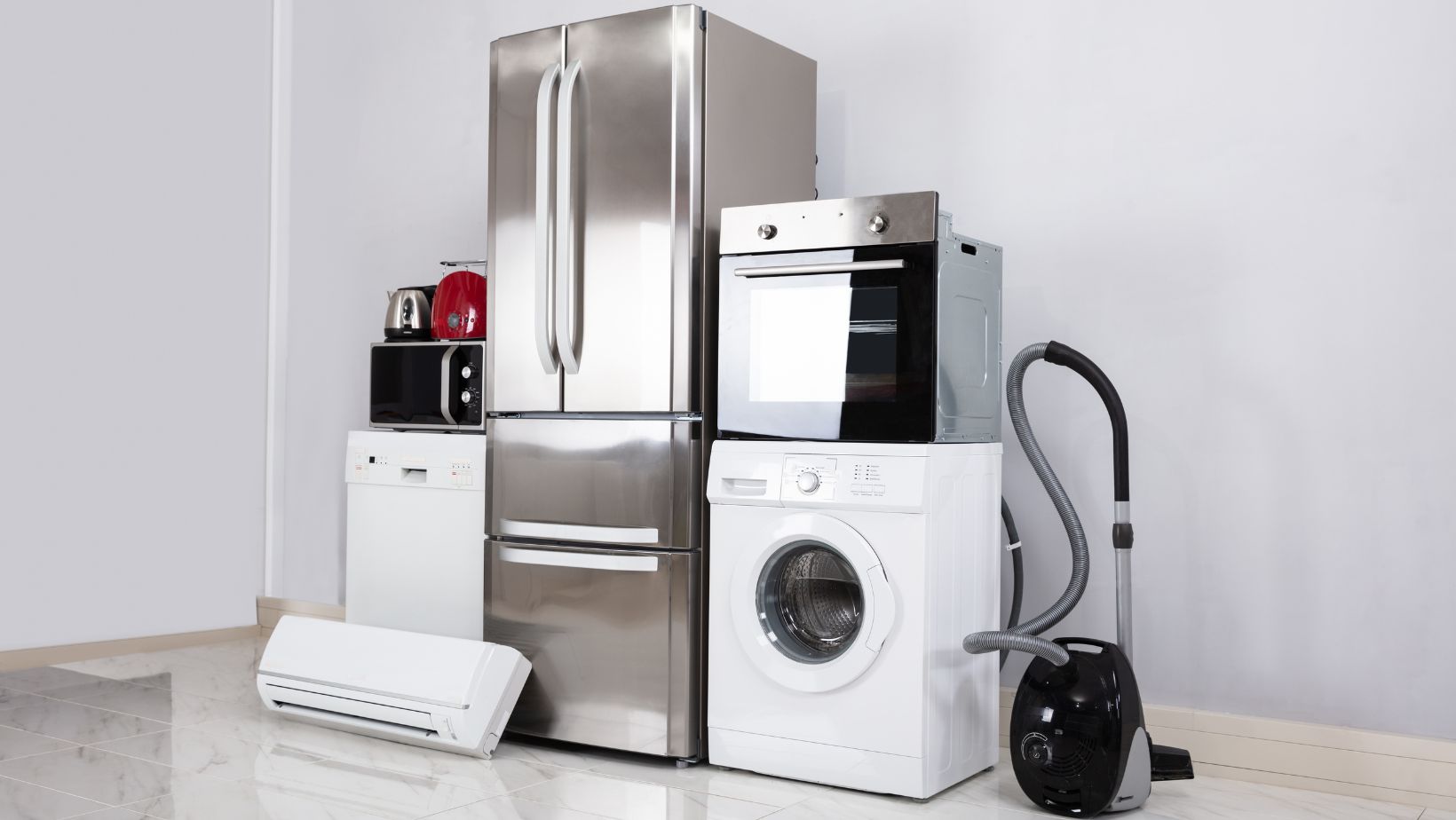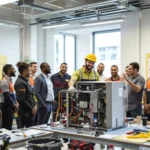
Modern kitchen appliances have become an integral part of our daily lives, providing convenience and efficiency in cooking and storing food. However, just like any other appliance, they can show signs of malfunction, causing hassle and interference with normal operation. In many cases, timely detection and resolution of breakdowns can save not only time, but also your own money for expensive repairs.
This article is designed to help you learn how to identify the cause of kitchen appliances breakdowns on your own. We will analyze common symptoms of malfunctions, provide recommendations on how to use basic diagnostic tools, and highlight key steps you can take to identify problems. By mastering these skills, you will be able to manage your appliances more efficiently, ensuring their long and trouble-free operation.
Overview of the Main Types of Kitchen Appliances
Kitchen appliances are an integral part of a modern household, contributing to the convenience and speed of cooking. For a deeper understanding and independent detection of breakdowns, let’s look at the main types of kitchen appliances and their features.
Looking at the main types of kitchen appliances, we can understand that they have their own unique characteristics and possible problems. Such an overview will create the basis for further study and self-diagnosis of breakdowns.
Refrigerators
Refrigerators play a key role in food preservation, ensuring its longevity and safety. The most common problems that a refrigerator can experience include improper temperature, water leaks, or a malfunctioning compressor. Diagnosing these problems can help keep your refrigerator running efficiently and increase its lifespan.
Stoves (Gas and Electric)
Stoves are an essential element of the kitchen, and their proper operation is essential for cooking. Problems with stoves can include uneven heating, incorrect temperatures, or ignition problems. Understanding how gas and electric ranges work helps you to effectively identify problems.
Ovens
Ovens are an important piece of kitchen equipment for preparing delicious and appetizing meals. Problems can include uneven heating, malfunctioning thermostat, or ventilation issues. Understanding how ovens work allows you to identify and solve problems in time.
Microwave Ovens
Microwave ovens provide fast and efficient heating and cooking. Problems can include no heat, abnormal noise, or malfunctioning electronic circuit boards. Understanding how microwaves work is essential to their effective use and diagnosis.
Dishwashers
Dishwashers make everyday household chores easier, but they can run into problems such as the door not opening properly, water leaks, or the pump not working properly. Learning the principles of operation allows you to identify and resolve unknowns on your own.
Coffee Makers
Coffee makers have become an integral part of the morning ritual for many people. Problems can include water leaks, improper coffee loading, or clogged filters. Familiarizing yourself with the ins and outs of your coffee maker can help keep it running efficiently.
Other Appliances
In addition to the main kitchen appliances, there are many others, such as blenders, toasters, juicers, that may also require attention. Knowing their features and possible problems helps to monitor their condition and avoid malfunctions.
Recognizing Common Symptoms of Household Appliances
Identifying common malfunction symptoms is a key step in effectively identifying and fixing problems in your kitchen appliances on your own.
Let’s look at the main signs that may indicate possible breakdowns:
- Lack of power. One of the most obvious symptoms of a malfunction is a lack of power to the device. First of all, check that the device is connected to a power source and the outlet is working. If the problem persists, the outlet, power cable, or internal components of the device may be defective.
- Abnormal noise or vibration. Unexpected noises or vibrations can be a warning of possible malfunctions. Pay attention to any changes in sound or vibration while the equipment is operating. This may indicate malfunctioning mechanisms, bearings, or other parts that require attention and correction.
- Unstable operation. If the device is operating erratically, there may be problems with the electronics, sensors, or other key components. For example, temperature controls or timers may be faulty. Try to determine if there are systematic malfunctions in the appliance.
- Water or gas leaks. Detecting water or gas leaks is critical because they can pose a safety hazard. Devices that use water or gas should be checked regularly for leaks. It is important to stop using them immediately and call a professional if problems are found.
- Incorrect temperature or pressure. Irregular temperature or incorrect pressure may indicate a malfunction in the control system. For kitchen appliances, such as refrigerators or ovens, it is important to periodically check that they are maintaining the set temperature levels. In case of deviations from the standards, additional diagnostics should be performed.
Tools and Knowledge Needed to Identify Faults
Correct identification of kitchen appliances requires not only the right tools and additional appliance parts, but also knowledge of how they work and the ability to use the operating instructions. Let’s take a look at how these aspects can contribute to effective diagnostics and troubleshooting.
Basic tools for diagnostics:
- Multimeter: Allows you to measure voltage, current, and resistance, which helps you identify electrical faults.
- Measuring instruments: Thermometers, barometers, and other tools for measuring temperatures, pressures, and other parameters.
- Allen wrench and screwdriver: For disassembling and replacing device parts.
- Flashlight: Helps to illuminate hard-to-reach areas during diagnostics.
Basic knowledge of how kitchen appliances work:
- Wiring diagrams: Understanding the basic wiring diagrams of the devices helps to locate possible interruptions.
- Technical features: Knowing about the working principles of different types of kitchen appliances allows you to determine which elements may be responsible for specific functions.
- Manufacturer’s specifications: Study the manufacturer’s specifications and recommendations for use.
Use of user manuals:
- Sequence of actions: User instructions often provide a sequence of actions to perform certain operations.
- Technical specifications: Information about technical parameters helps you to evaluate the performance of the device.
- Maintenance recommendations: Guidelines for regular maintenance and care of the appliance.
Using the right tools and understanding the principles of kitchen appliances are important steps for effective diagnosis and subsequent troubleshooting. Also, studying the user manuals allows you to ensure proper maintenance and use of the equipment, which increases its durability and reliability.
Conclusion
We hope that this article has helped you gain the understanding and skills to independently determine the causes of breakdowns in kitchen appliances. Please note that early detection and troubleshooting can significantly save you time and money, as well as contribute to the long and efficient operation of your appliances.

Remember the importance of using the correct diagnostic and troubleshooting tools and having a basic understanding of how your kitchen appliances work. By using the user manual and following the manufacturer’s recommendations, you will ensure reliable and safe operation of the equipment.
Do not forget that in case of complex or dangerous malfunctions, it is always recommended to contact qualified specialists or service centers. Your own safety is always a priority.
We wish you successful management of your kitchen appliances, their long life and delicious culinary delights!












![9 Acapella Extractors in 2025 [Online/Offline] 9 Acapella Extractors in 2025 [Online/Offline]](https://simcookie.com/wp-content/uploads/2025/10/RMA-1640-x-924-px-2025-10-28T115425.047-300x169.jpg)
